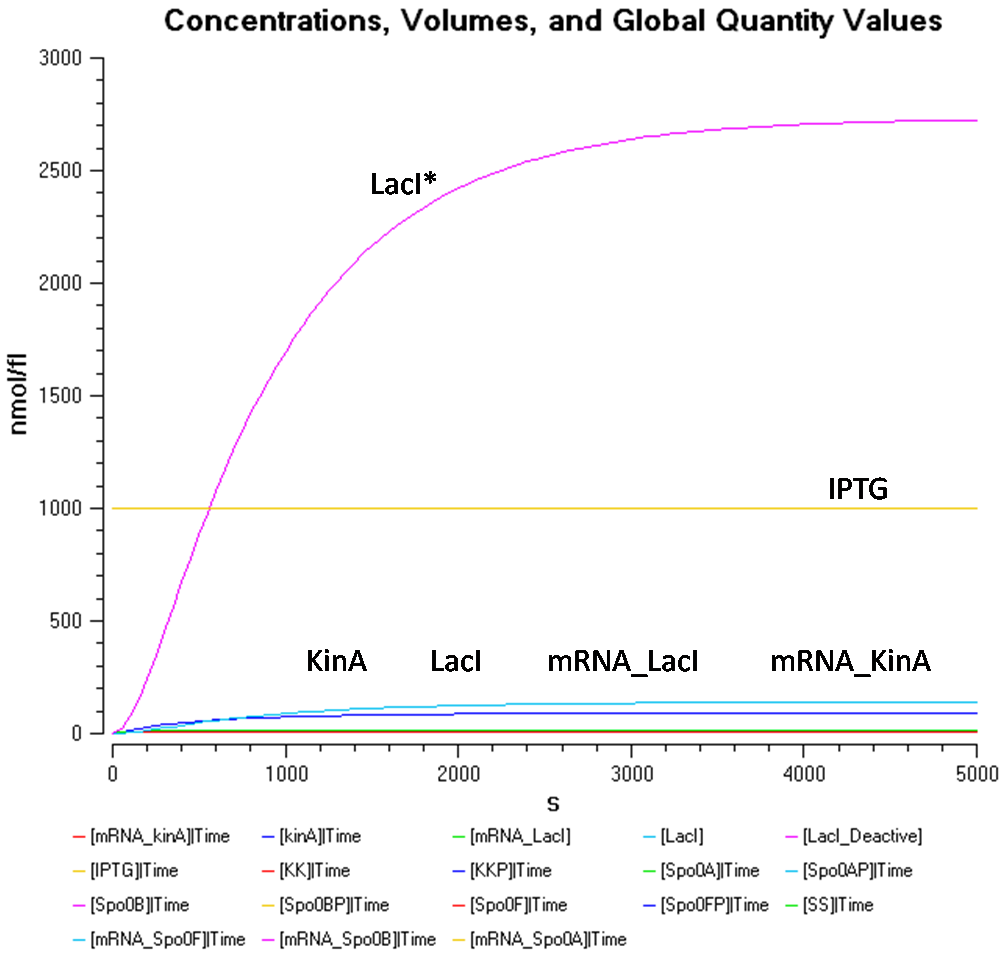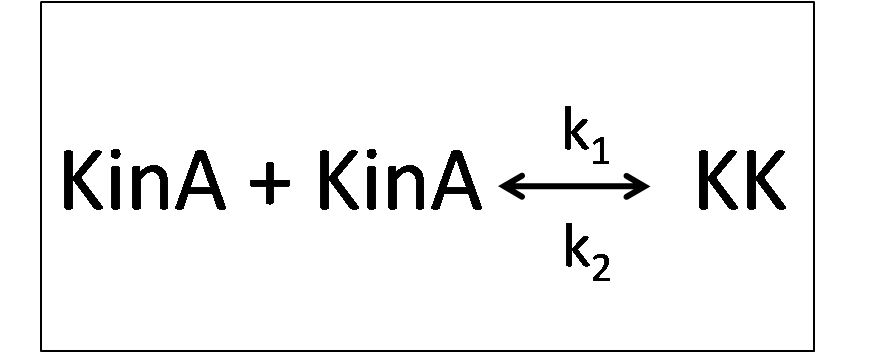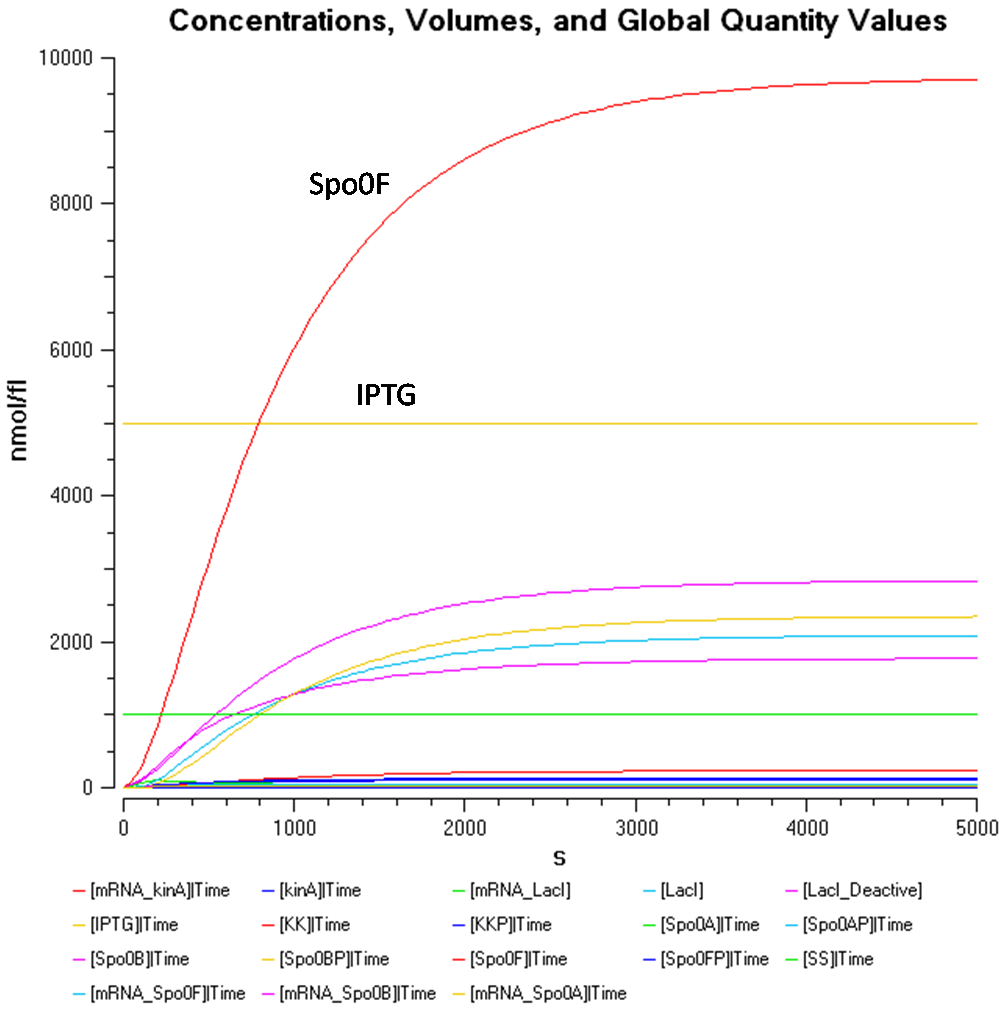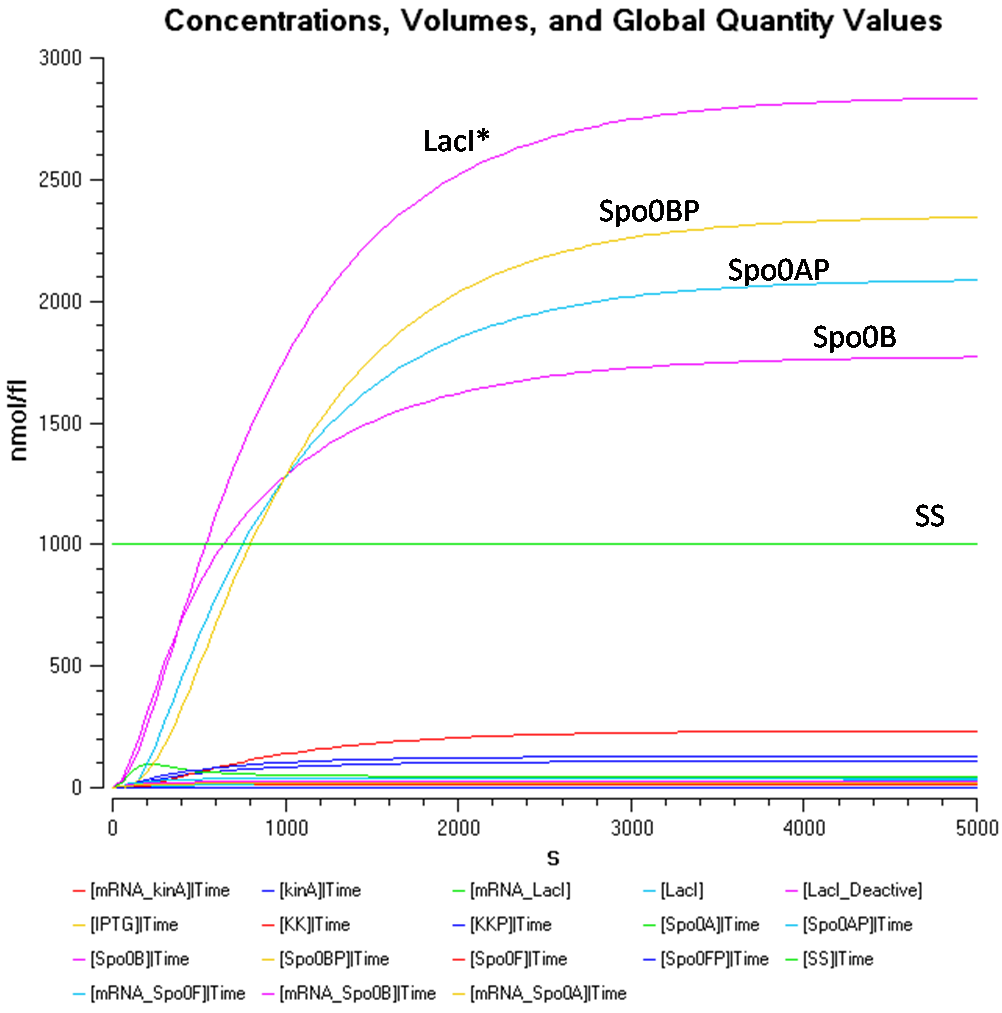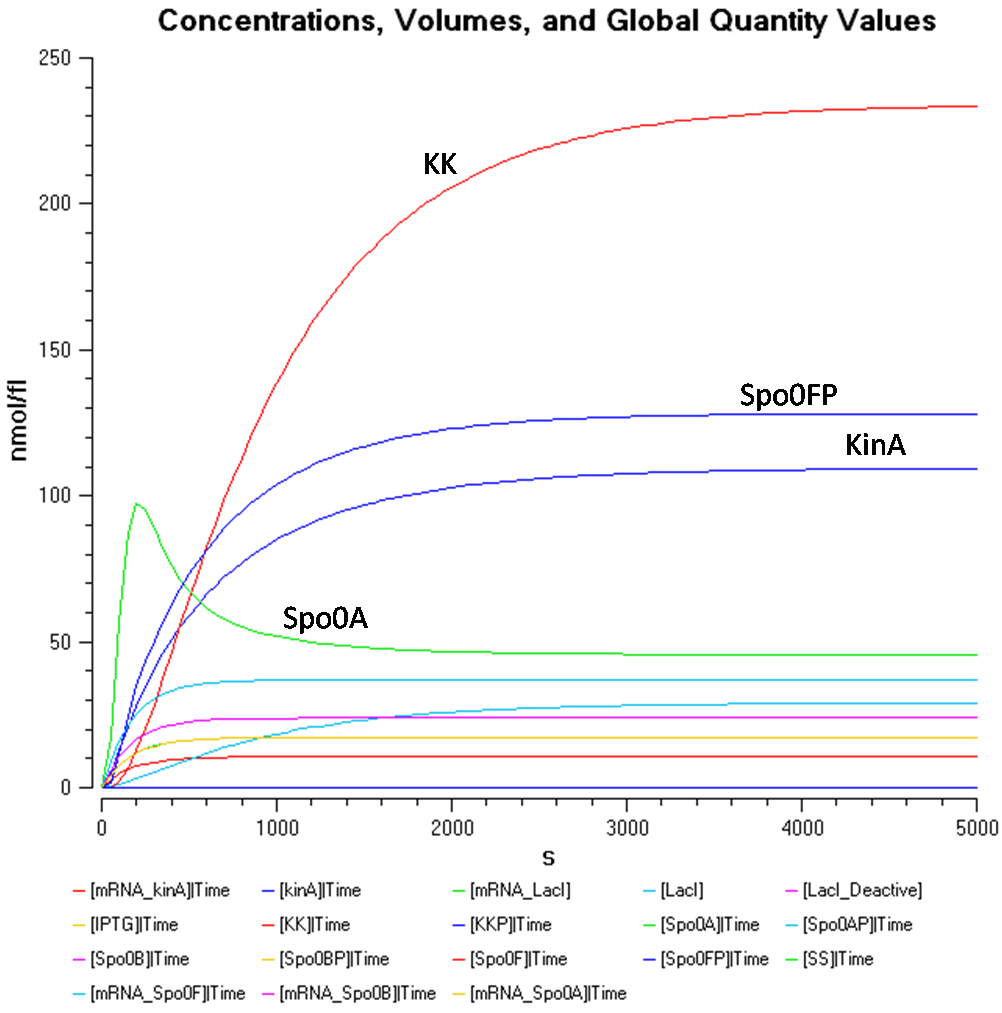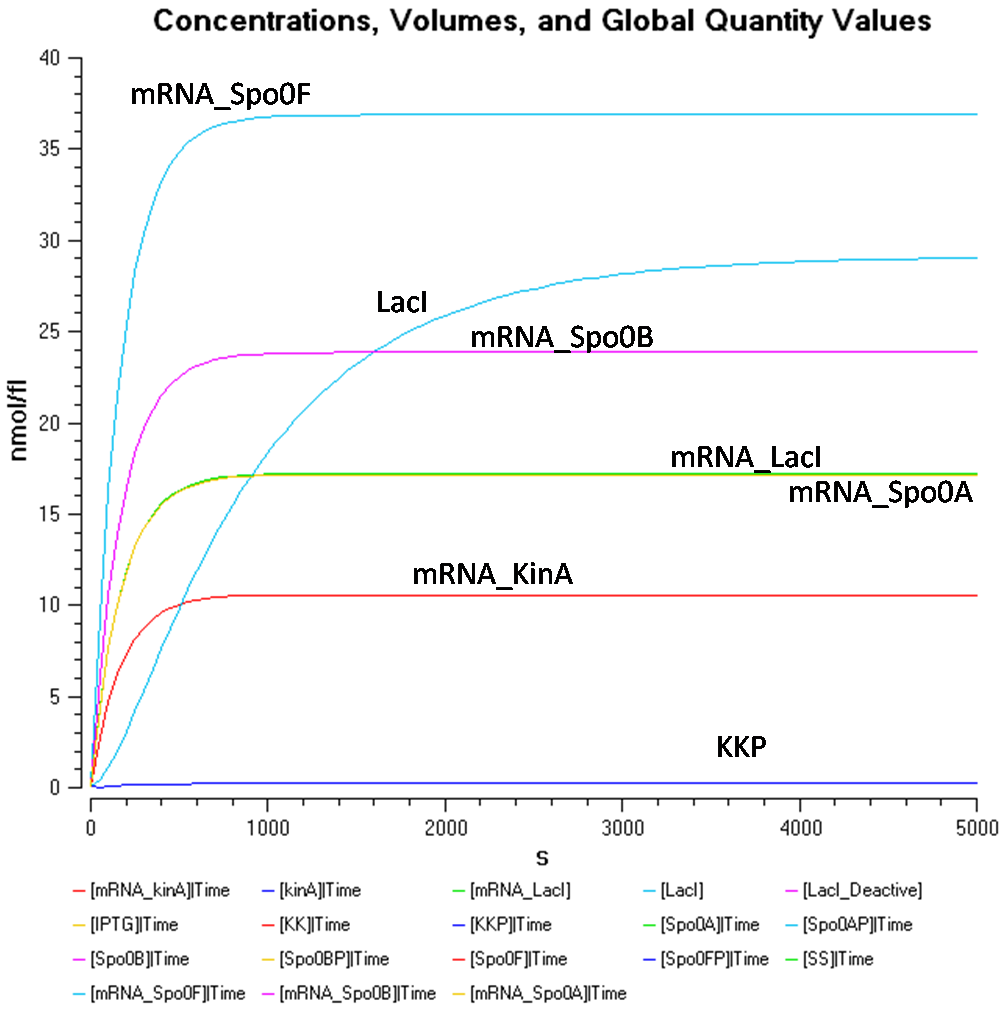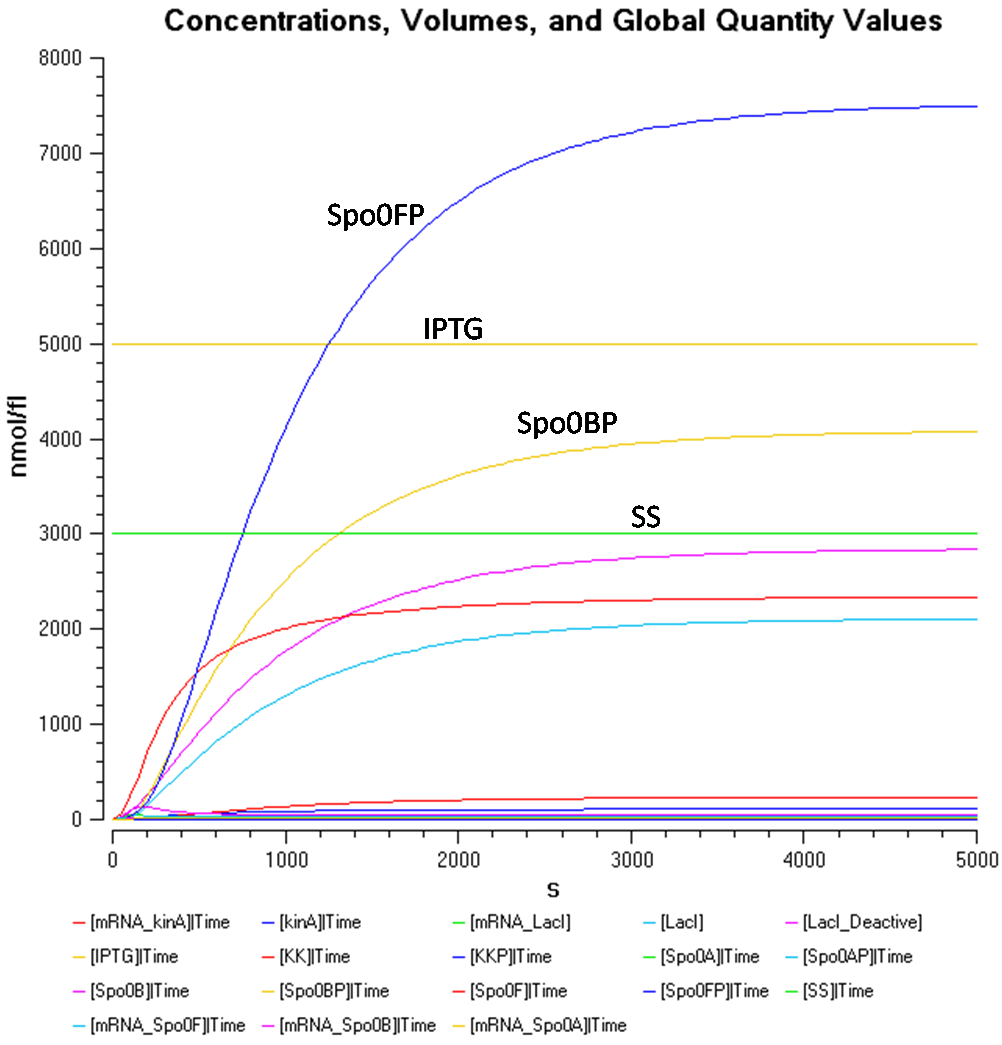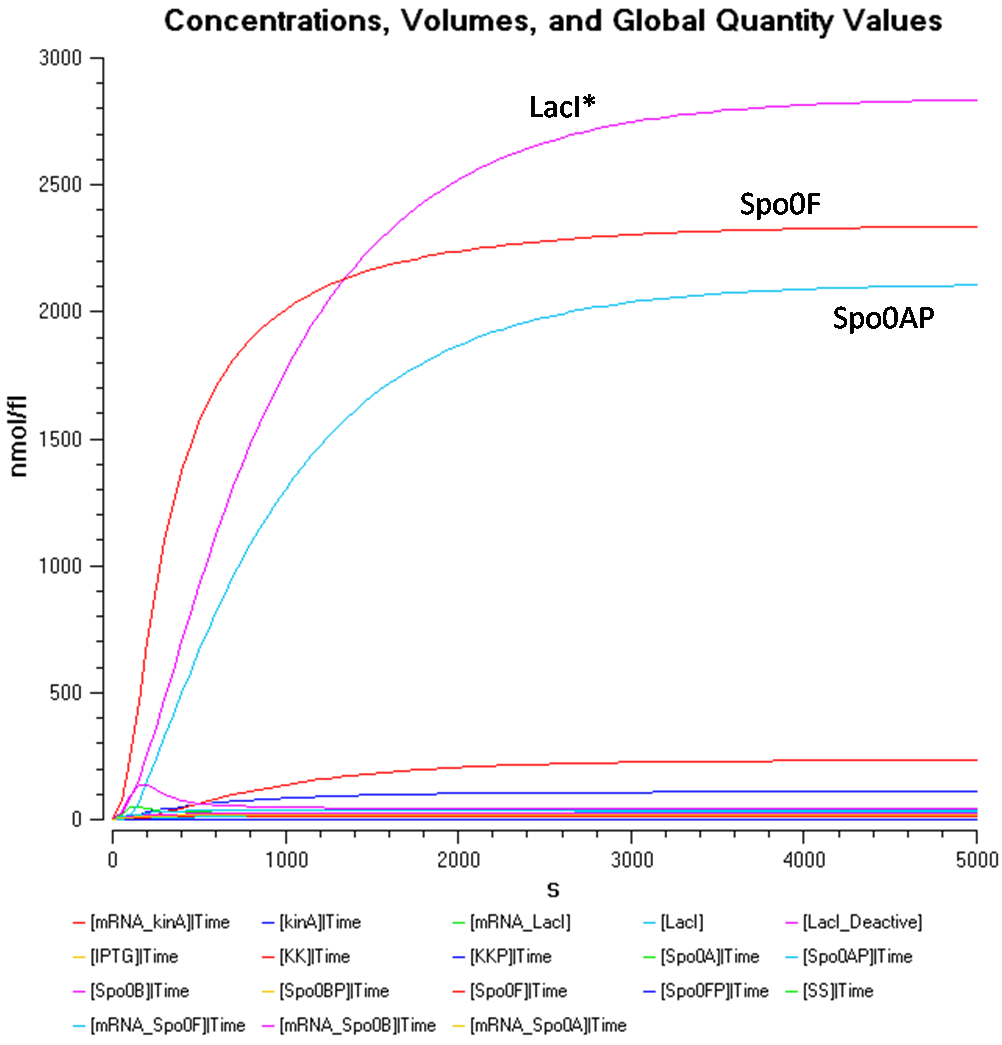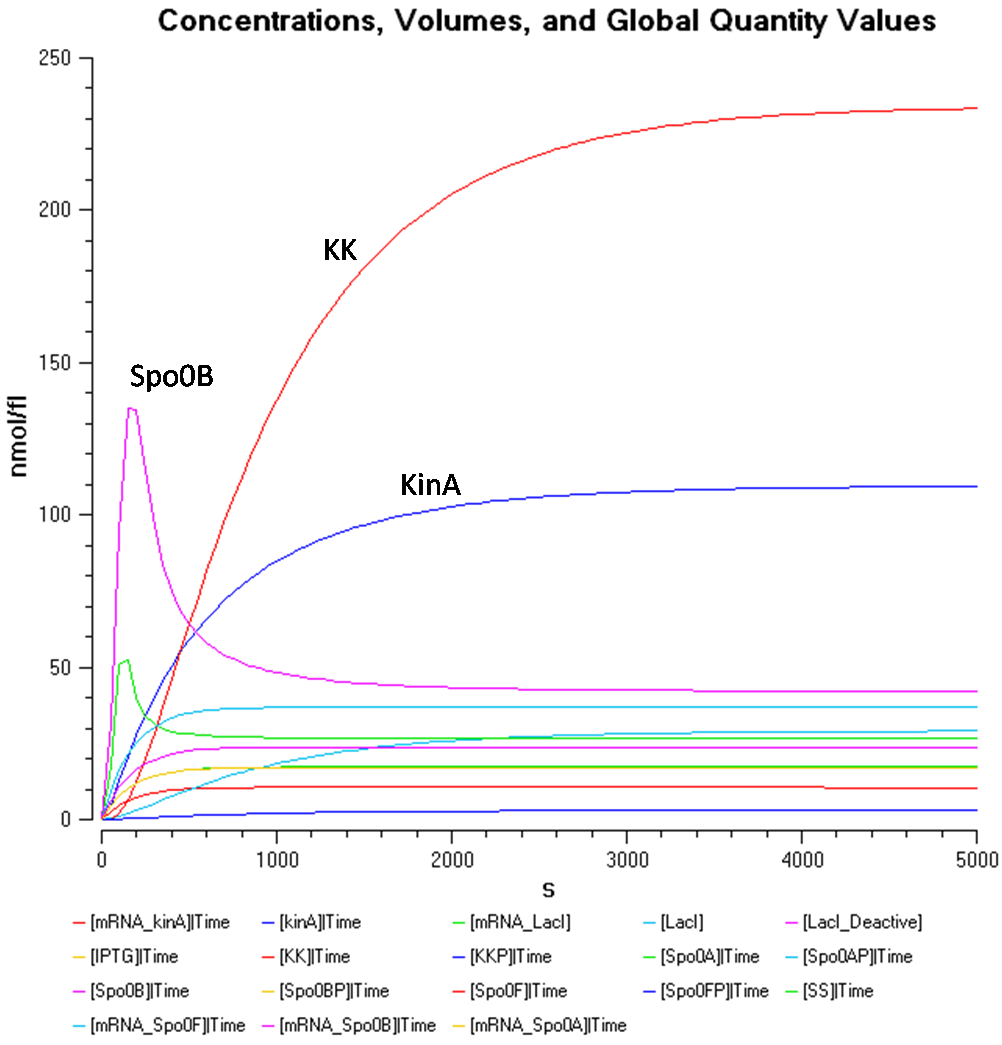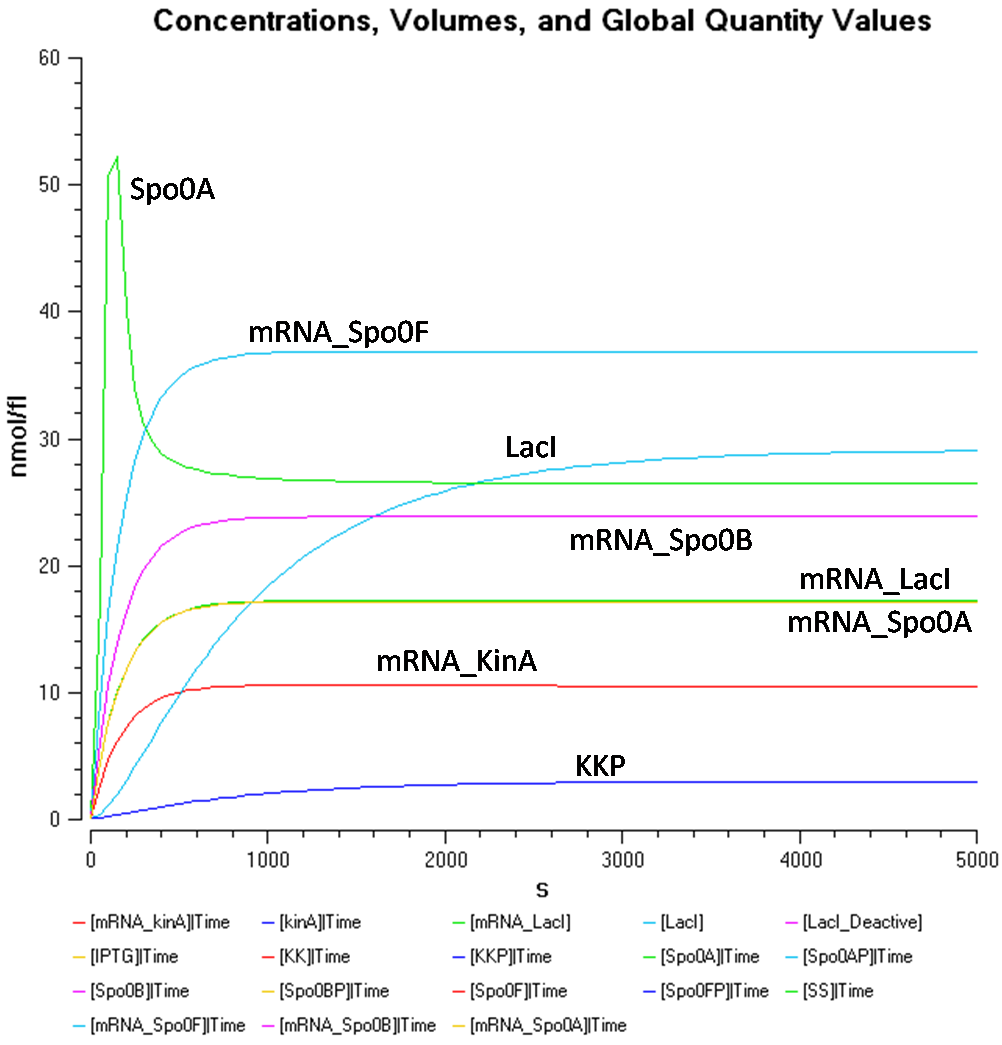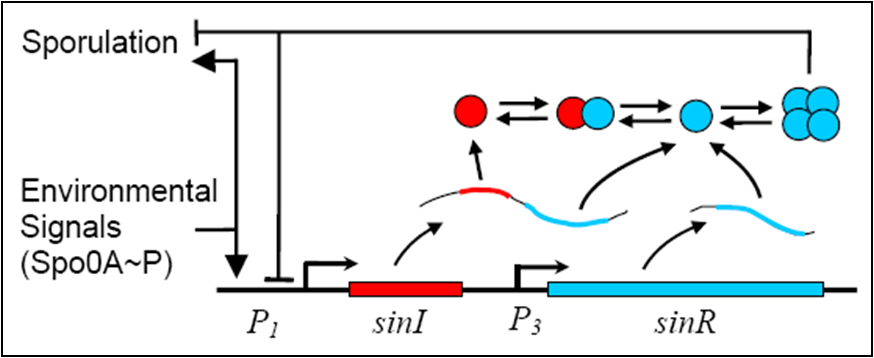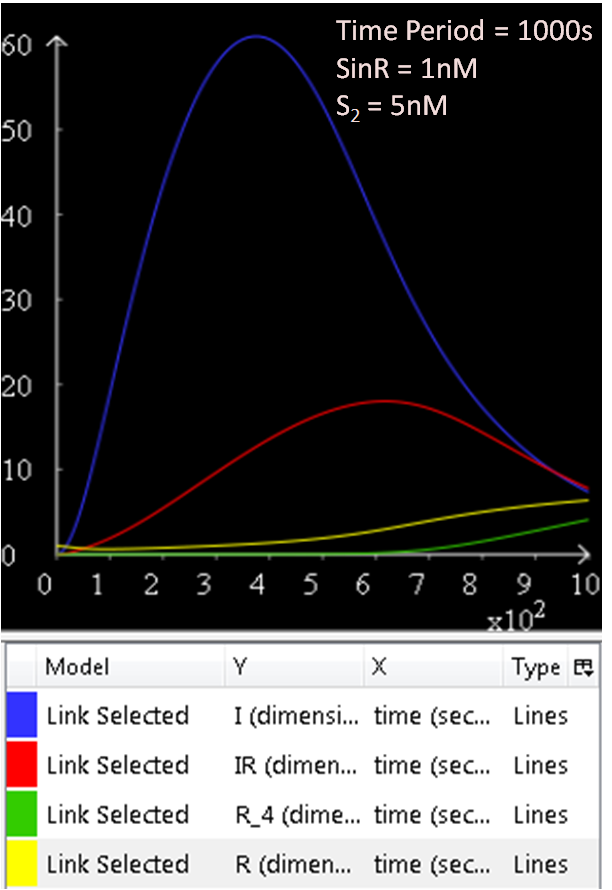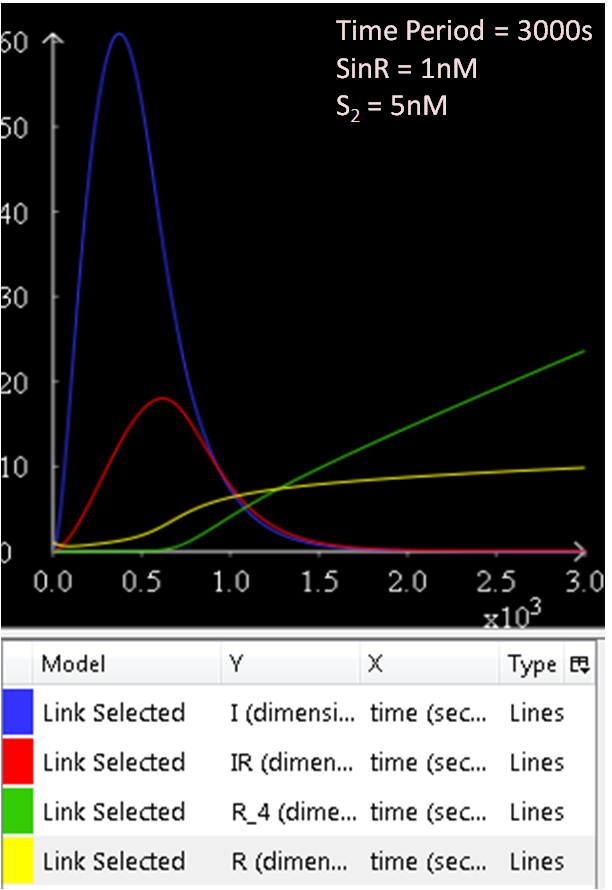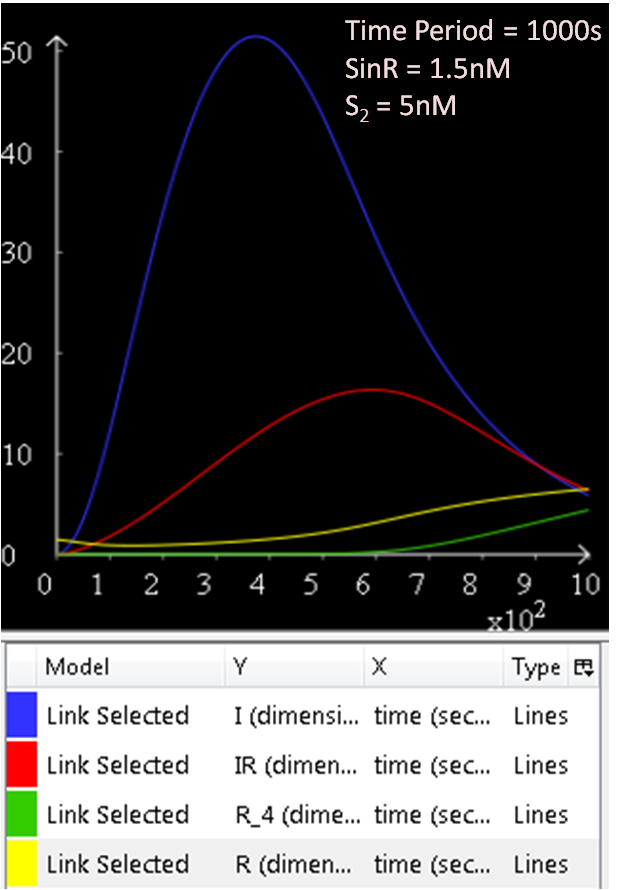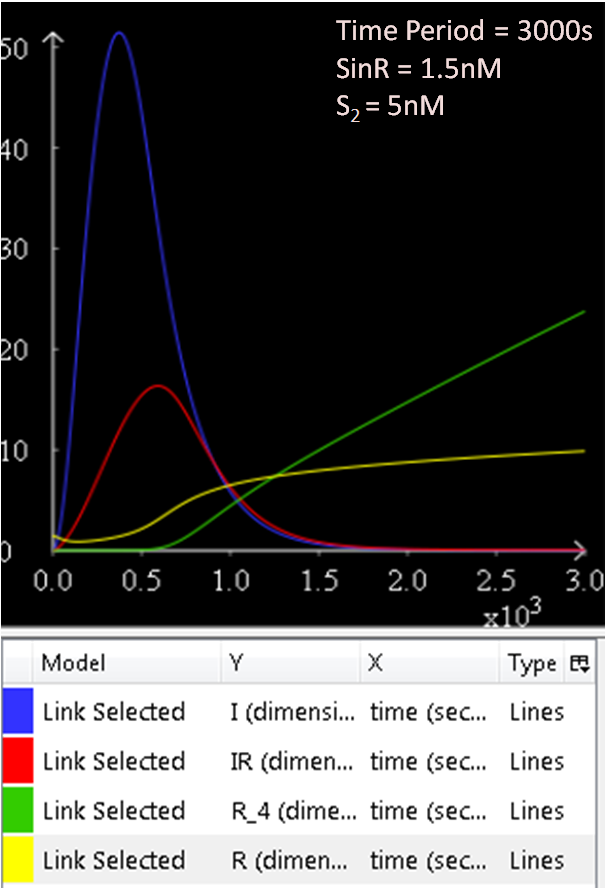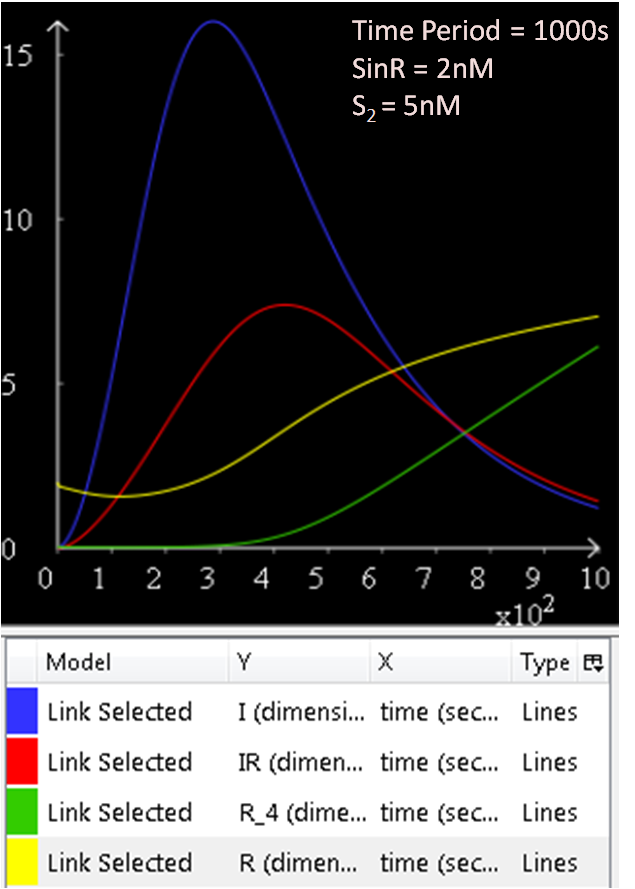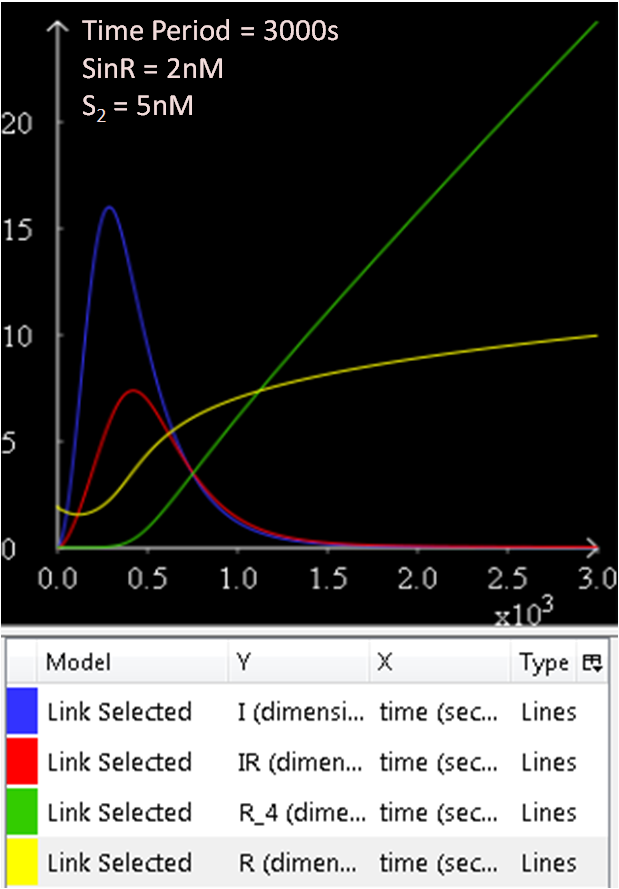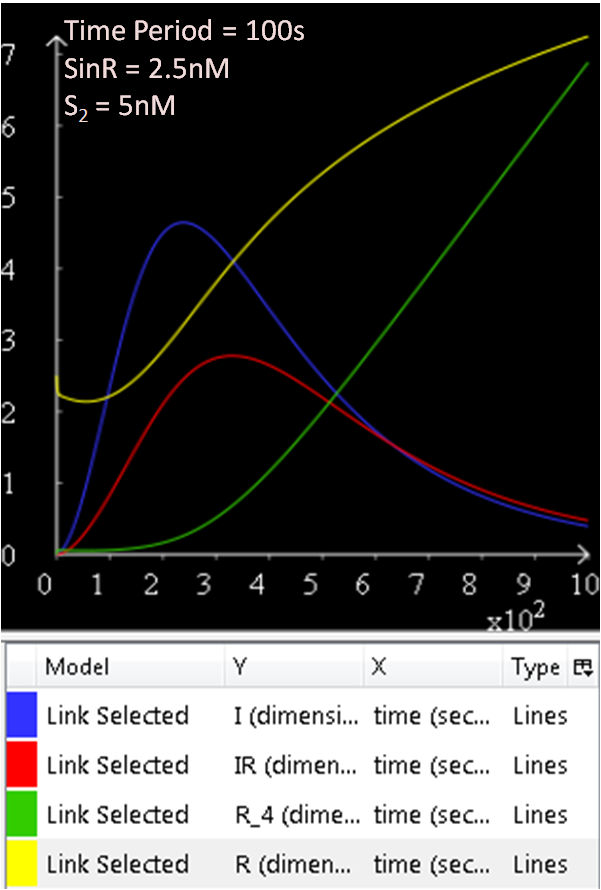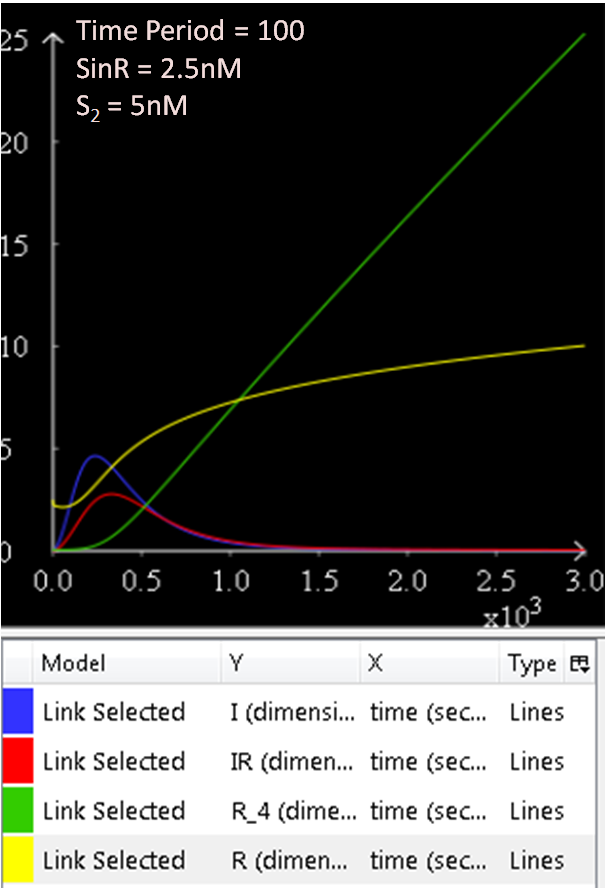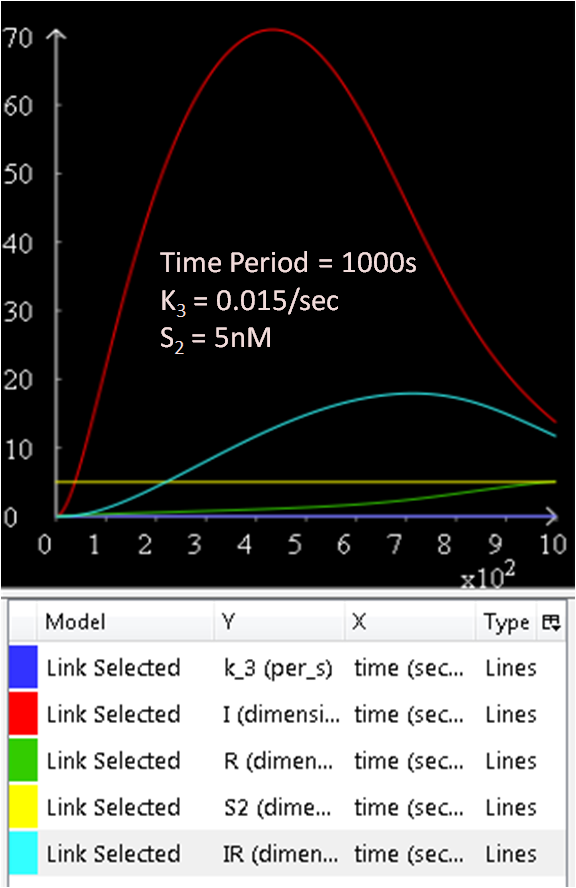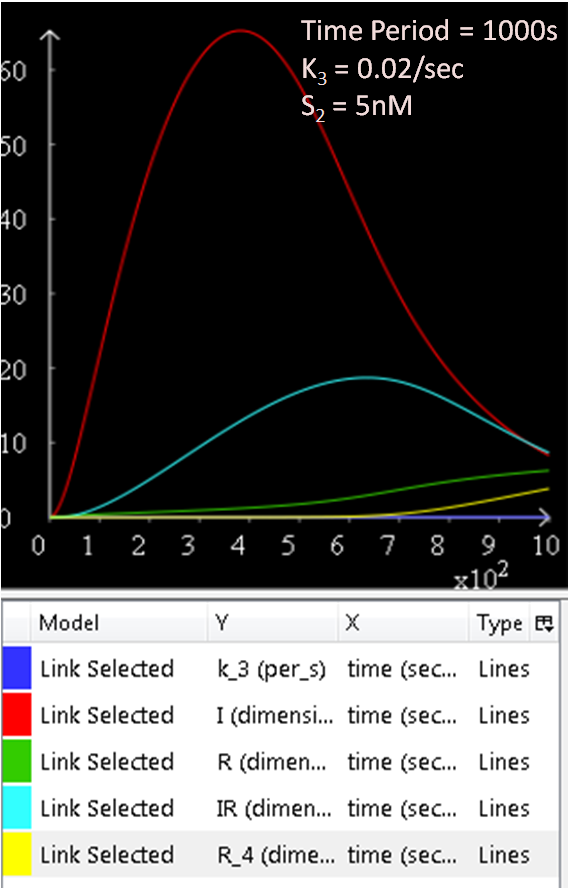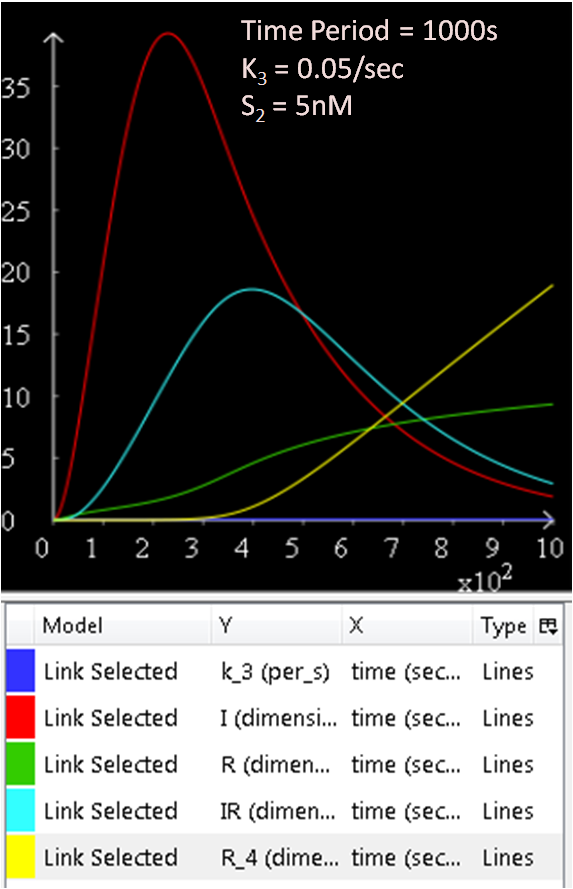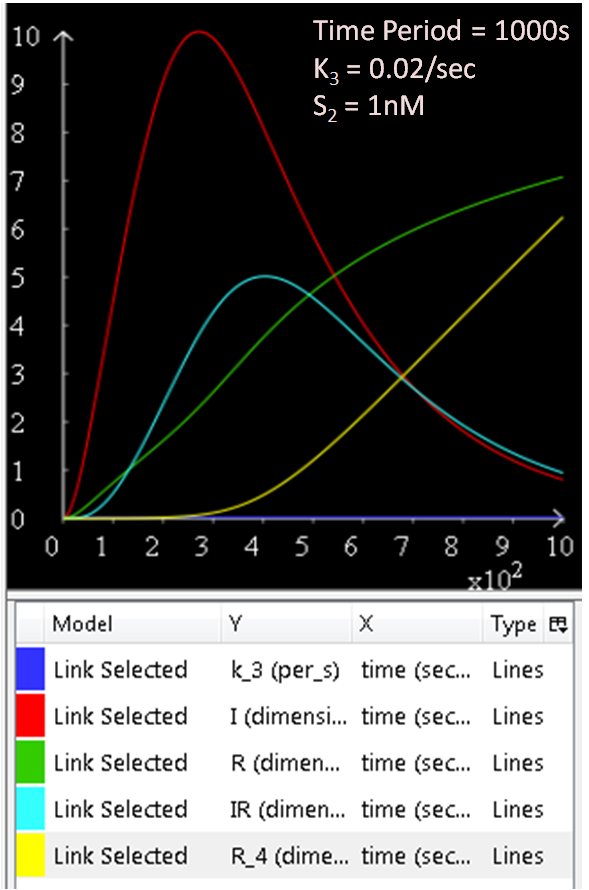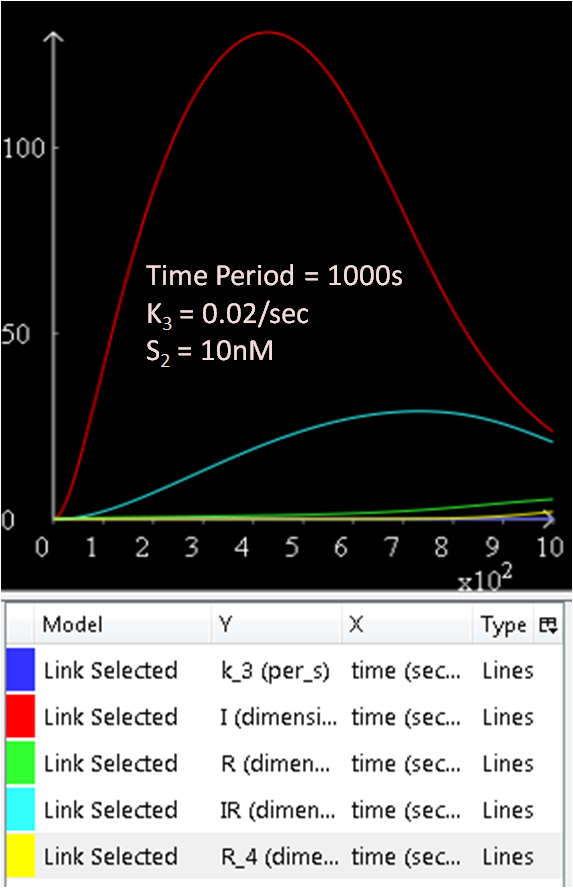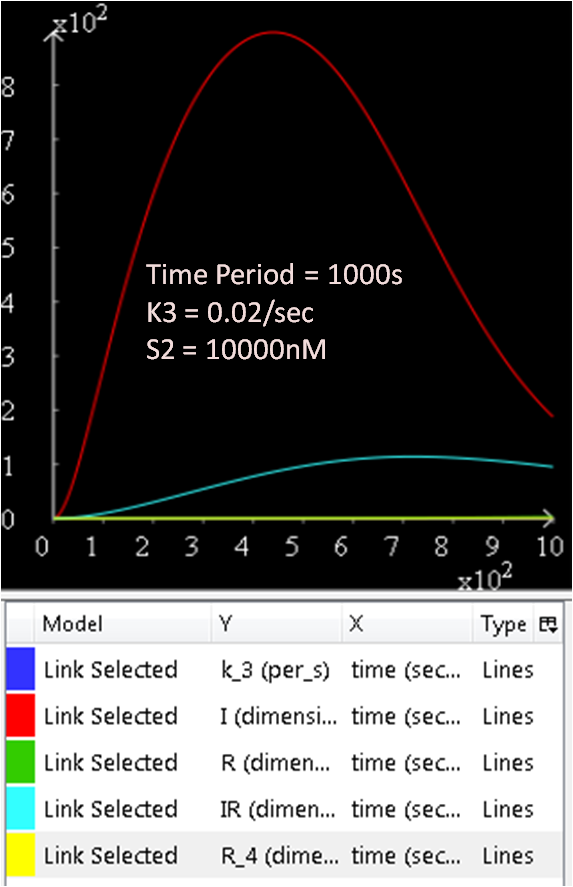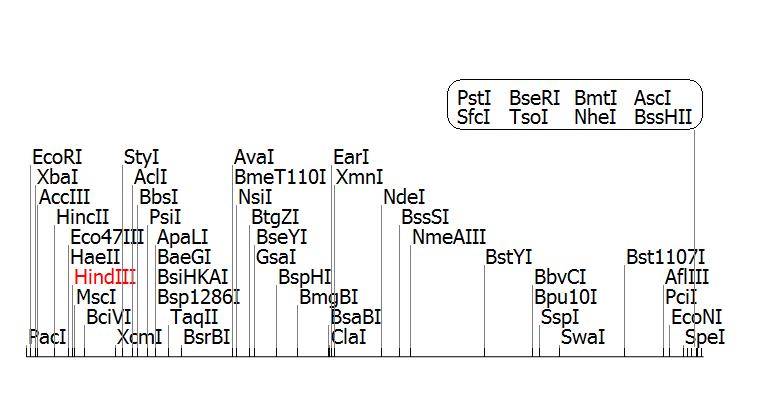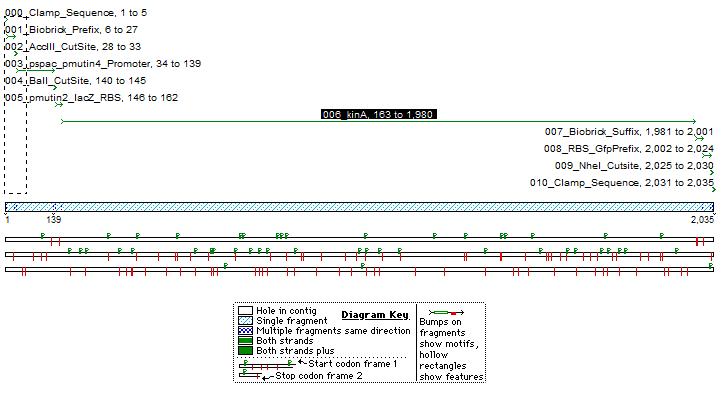Team:Newcastle/SporulationTuning
From 2009.igem.org
(→Results) |
(→Sporulation Tuning Model) |
||
| Line 95: | Line 95: | ||
| - | + | To understand more about the Sporulation Tuning Model, | |
| - | + | see [[Team:Newcastle/Modelling/SporulationTuning#Sporulation_Tuning_Model| Sporulation Tuning Model Equations]] | |
| - | [[ | + | |
| - | + | ||
| - | + | ||
| - | + | ||
| - | + | ||
| - | + | ||
| - | + | ||
| - | + | ||
| - | + | ||
| - | + | ||
| - | + | ||
| - | + | ||
| - | + | ||
| - | + | ||
| - | + | ||
| - | + | ||
| - | + | ||
| - | + | ||
| - | + | ||
| - | + | ||
| - | + | ||
| - | + | ||
| - | + | ||
| - | + | ||
| - | + | ||
| - | + | ||
| - | + | ||
| - | + | ||
| - | + | ||
| - | + | ||
| - | + | ||
| - | + | ||
| - | + | ||
| - | + | ||
| - | + | ||
| - | + | ||
| - | + | ||
| - | + | ||
| - | + | ||
| - | + | ||
| - | + | ||
| - | + | ||
====Results==== | ====Results==== | ||
Revision as of 16:15, 21 October 2009
Sporulation Tuning
Introduction
In this section of our project, we hope to control sporulation in our bacterial population, such that we can decide how much of the population becomes spores, and how much continue as vegetative cells. Should the cell sporulate, it would become a ‘metal container’, trapping the sequestered cadmium in its spore.
After the cell sequesters cadmium into its spore, it should not germinate or the sequestered cadmium will be released back into the environment as a result. Therefore, the role of chassis comes into play, where the sleB and cwlJ germination-defective mutants are put into use. More information about this other sub-project of ours can be found here.
In order to control sporulation, our team is proposing the idea of inducing the synthesis of KinA, with IPTG as a sporulation initiation signal.
KinA is a major kinase which provides phosphate input to the phosphorelay, which in turn, activates the sporulation pathway upon starvation via the phosphorylated Spo0A transcription factor,[1] which governs entry into the sporulation pathways of the bacterium Bacillus subtilis.[2]
Spo0A
From our research, we found that entry into the sporulation pathway is governed by a member of the response regulator family of transcription facts, known as Spo0A.[2] Spo0A is activated by phosphorylation on an aspartyl residue located in the N-terminal portion of the protein.[2]
Unlike other response regulators, Spo0A is indirectly phosphorylated by a multicomponent phosphorelay involving at least three kinases called KinA, KinB, and KinC, which phosphorylate Spo0F, and the resulting Spo0F~P, in turn, transfers the phosphoryl group to Spo0B. Finally, Spo0B~P transfers the phosphoryl group to, and thereby activates, Spo0A.[2] As such, the phophoryl groups are drained from the relay by the action of dedicated phosphotases that dephosphorylate Spo0F~P and Spo0A~P.[2]
Spo0A is also subjected to control at the levels of its synthesis and activity by a positive feedback loop in which the response regulator stimulates the synthesis of the RNA polymerase σ factor σH, which, in turn stimulates transcription of the gene for Spo0A, as well as the genes for the phosphorelay components KinA and Spo0F.[1]
It is important to note that activating Spo0A via the phosphorelay is essential as it is responsible for allowing Spo0A to accumulate in a gradual manner, and this slow accumulation plays a critical role in the ability of the regulatory protein to trigger sporulation.[2] Experiments have also been carried out and results have shown that the activated form of Spo0A failed to trigger sporulation during growth as it had bypassed phosphorylation, and only a small proportion of cells progressed to the early stage of sporulation.[2]
Sporulation
From our research, we found that phosphatases may be viewed as negative regulators that provide access for negative signals to influence the cell’s decision whether to sporulate or to continue vegetative growth.[3] The phosphotases that dephosphorylates Spo0A, preventing its activation are Spo0E, YisI, and YnzD.[4] Therefore, in order to ensure that sporulation occurs under the appropriate conditions, the phosphorelay must integrate the competition between signal input provided by the kinases and signal cancellation carried out by the phosphatises, which determines the decision to sporulate or not,[3][4] by governing flux through the relay and hence the level of Spo0A~P, which must reach a threshold concentration to trigger sporulation.[2]
Other than the external and internal signals that are integrated into the phosphorelay, it is important to note that sporulation is also initiated by nutrient starvation, cell density, and cell cycle progression.[4]
KinA
Sporulation can be triggered with high efficiency in cells in the exponential phase of growth in rich medium by artificial induction of the synthesis of any one of three histidine kinases tha feed phosphoryl groups into the relay.[2] For our project, we will be using Kin A, a major histidine kinase responsible for activating the sporulation pathway in Bacillus subtilis.[5]
KinA is a soluble cytoplasmic protein that appears to be active as a dimer and is composed of an amino-terminal sensor domain and a carboxy-terminal autokinase domain.[5]
Novelty in this sub-project
Instead of allowing the cell to decide whether or not to sporulate, we hope to influence it's decision. We plan to use kinA as a part of this system.
Modelling
The Sin (sporulation inhibition) Operon Model was one of the earlier models built.
The second model built was the simple model of KinA expression. After satisfactory results were obtained, the sporulation phosphorelay was modelled into the KinA Expression Model.
KinA Expression Model
Under normal conditions, LacI represses KinA.
However, in the presence of IPTG, KinA can be expressed, as IPTG binds to LacI, deactivating it. Equations (a) and (b) describes how IPTG binds to LacI, forming LacI*, which is the deactivated form of LacI
To understand more about the KinA Expression model, see KinA Expression Equations
Results
To view more results obtained from the KinA Expression Model, see KinA Expression Results
Sporulation Tuning Model
The expression of KinA has been modelled as seen above, therefore we can now proceed further into the Sporulation Tuning Model, which is built from the KinA Expression Model with COPASI.
To proceed with the modelling of our Sporulation Tuning Model, we have decided that in response to an unidentified stimuli, where KinA autophosphorylates and then donates its phosphate groups to the response regulator Spo0F, the unidentified stimuli will be termed as 'sporulation signal'.[4]
The following equations describe the model:
To understand more about the Sporulation Tuning Model,
see Sporulation Tuning Model Equations
Results
At a constant IPTG concentration of 5000nmol/fl, we vary the concentration of the sporulation signal, [SS] and the following graphs show the results.
At [SS] = 1000nmol/fl
Figure 1.1 shows that at an IPTG concentration of 5000nmol/fl and sporulation signal concentration of 1000nmol/fl, the Spo0F concentration gets significantly higher than the other components.
In order to take a better look at the behaviour of the rest of the components, the following graphs were produced.
From Figure 1.2, the concentration of Spo0AP seems to be at a healthy concentration.
At [SS] = 3000nmol/fl
The concentration of the sporulation signal, [SS] is increased to 3000nmol/fl in the following graphs, and the results were investigated.
With a stronger sporulation signal, the concentration of Spo0FP and Spo0BP increased significantly, while the concentration of Spo0F dropped significantly from approximately 9000nmol/fl to 2300nmol/fl, comparing Figure 1.1 to 2.1.
The concentration of LacI* remained approximately the same, so as Spo0AP.
Comparing Figure 1.3 and 2.4, the concentration of Spo0A falls from approximately 100nmol/fl to 50nmol/fl when [SS] is increased.
Referring to the graphs obtained from the model, it seems like increasing the sporulation signal concentration, does not increase the Spo0AP concentration. However, the concentrations of Spo0BP and SpoFP did increase as the sporulation signal concentration increased.
Sin (sporulation inhibition) Operon Model
In order to create a more realistic model of our sporulation system, in addition to the previous model, the team has decided to include the Sin (sporulation inhibition) Operon Model, which the team designed in CellML.
The sin operon controls the production and activity of the repressor SinR, which in its active tetrameric form, inhibits sporulation by repressing stage II and spo0A promoters. On the other hand, the accumulation of Spo0A~P induces the expression of SinI, which binds to and inactivates SinR.
The following differential equations makes up a deterministic model which describes the Sin Operon.
where:
AI, the expression rate of SinI = 0.8 sec-1
γI, the degradation rate of SinI = 0.02 sec-1,
kIon, the rate of the formation of dimers = 0.083 nM-1 sec-1,
kIoff, the off rate for SinI:SinR = 0.5 sec-1,
where:
AR, the expression rate of SinR = 0.014 sec-1
γR, the degradation rate of SinR = 0.002 sec-1
kRoff, the off rate for SinR tetramers = 0.5 sec-1
kRon, the rate for tetramer formation = 0.00125 nM-3 sec-1
where:
k1, the transcription rate from P1 = 0.15 sec-1
γ1, the degradation rate of m1 = 0.005 sec-1
where:
γ3, the degradation rate of m1 = 0.005 sec-1
where:
[S2] is the concentration of Spo0A~P dimers,
[R4] is the concentration of SinR tetramers,
[RNAP] = 30 nM is the concentration of free RNA polymerase available for transcription.
The equilibrium association constants Ki, where RT = 1.62, are defined as:
K2 = exp(-∆G2/RT) x 1e-9, where ∆G2 = -10.5
K3 = exp(-∆G3/RT) x 1e-9, where ∆G3 = -12.5
K4 = exp(-∆G4/RT) x 1e-9, where ∆G4 = -9.0
K5 = exp(-∆G5/RT) x 1e-9, where ∆G5 = -21.5
K6 = exp(-∆G6/RT) x 1e-9, where ∆G6 = -21.5
K7 = exp(-∆G7/RT) x 1e-9, where ∆G7 = -22.5
K8 = exp(-∆G8/RT) x 1e-9, where ∆G8 = -33.5
The Sin (sporulation inhibition) Operon Model is available for download as follows:
- Text format: Media:TeamNewcastleSinOperonModel.txt
Results
In the next few graphs, the concentration of SinR is varied to see how it affects the system.
From Figure 1.1 and 1.2, which are essentially the same graphs, but at different time durations, it is observed that when the concentration of SinR is set at 1nM, the SinI concentration reaches a maximum of approximately 60nM.
Referring to Figure 2.1 and 2.2, when the concentration of SinR is increased to 1.5, the concentration of SinI drops to approximately 50nM.
When the concentration of SinR is set to 2nM, as seen in Figure 3.1 and 3.2, the concentration of SinI reaches a maximum of approximately 15nM.
Comparing the previous results obtained, it seems like the concentration of SinI is most affected when the concentration of SinR is set at 2nM.
The concentration of SinI further drops to 5nM when the concentration of SinR is increased to 2.5nM.
The results from figures 1 to 4 shows that SinR does repress SinI. The greater the concentration of SinR, the lower the concentration of SinI. Also, the concentration of the SinR tetramers (R4) increases as well.
As seen in Diagram 1, k3 is a rate constant of P3. Therefore, at a low k3 value, a high concentration of SinI would be expected. This theory is explored and the results are as follows:
Figure 5.1, 5.2, and 5.3 justifies the theory, as it can be observed that the greater the k3 rate constant, the lower the SinI concentration.
The following graphs will investigate the effect on the system when the Spo0A protein concentration, [S2] is varied. The rate constants k3 will be kept constant. The suggested range for [S2] is 1 to 10 000nM.
From the above three figures, Figure 6.1, 6.2 and 6.3, the concentration of SinI increases as [S2] increases.
BioBrick constructs
The BioBrick we have designed is to contain an IPTG inducable kinA gene, using pSpac, allowing us to test the theory about KinA in the lab.
BBa_K174010
KinA
Length: 1818bp
Click [http://partsregistry.org/wiki/index.php?title=Part:BBa_K174010 here] for more information on this part.
BBa_K174011
IPTG inducable KinA sporulation trigger
Length: 1953bp
Click [http://partsregistry.org/wiki/index.php?title=Part:BBa_K174011 here] for more information on this part.
Lab Work Strategies
The lab work will mainly be to test our BioBrick using IPTG.
Construction
Synthesised by GeneArt, fragment: 2024bp
Cloning
The fragment will be returned from GeneArt cloned into pGFG-rrnB. Once the fragment is received from GeneArt we need to clone it into a BioBrick compatible vector for submission to MIT. Digesting the fragment with EcoR1 and Pst1 and ligation to EcoR1 and Pst1 cut biobrick vector will do this.
Integration
This is quite a difficult exercise because whilst pGFG-rrnB is designed to integrate at the amyE locus the presence of the native kinA on the 168 chromosome. The construct will preferentially integrate at kinA (disrupting it) rather than amyE. A large number of transformants will need to be screened using starch plates and pcr to ensure that the correct mutants are selected that contain the construct integrated at only amyE. A backup strategy would be to integrate pMutin into the region immediately upstream of the native kinA ensuring that the native promoter and its control elements are preserved. The pSpac promoter would then be positioned upstream of kinA and therefore provide additional transcription in the presence of IPTG.
Testing and Characterisation
Once obtained the mutant will need to be tested for the induction of sporulation in the presence of IPTG. This would involve microscopy and testing cultures for sporulation (e.g. by their heat resistance).
References
[1] Veening, J-W., Smits, W. K., Kuipers, O. P. (2008) Bistability, Epigenetics, and Bet-Hedging in Bacteria. Annu. Rev. Microbiol. 62: 193-210
[2] Fujita, M., Losick, R. (2005) Evidence that Entry into Sporulation in Bacillus subtilis is Governed by a Gradual Increase in the Level and Activity of the Master Regulator Spo0A. 19: 2236–2244
[3] Sonenshein, A.L., Hoch, J.A., Losick, R., (2002) Bacillus subtilis and Its Closest Relatives From Genes to Cells. ASM Press, United States of America. Pp 476–477
[4] Hilbert, D.W., Piggot, P.J., (June 2004) Compartmentalization of Gene Expression during Bacillus subtilis Spore Formation. Microbiology and Molecular Biology Reviews. Vol. 68, No. 2. Pp 234-262
[5] Eswaramoorthy, P., Guo, T., Fujita, M. (2009) In Vivo Domain-Based Functional Analysis of the Major Sporulation Sensor Kinase, KinA, in Bacillus subtilis. Journal of Bacteriology. Pp 5358-5368
News
Events
- 20 – 21 June 2009 - Europe workshop (London)
- 23 – 24 June 2009 - UK iGEM meetup (Edinburgh)
- 23 October Practice Presentation (Newcastle)
- 23 October T-shirts are ready
- 27 October Practice Presentation (Sunderland)
- 27 October Poster is ready
- 30 October – 2 November 2009 - Jamboree (Boston)
Social Net
- Newcastle iGEM Twitter
- [http://www.facebook.com/home.php#/group.php?gid=131709337641 Newcastle on Facebook]
- [http://www.youtube.com/user/newcastle2009igem Newcastle Youtube Channel]
 "
"


